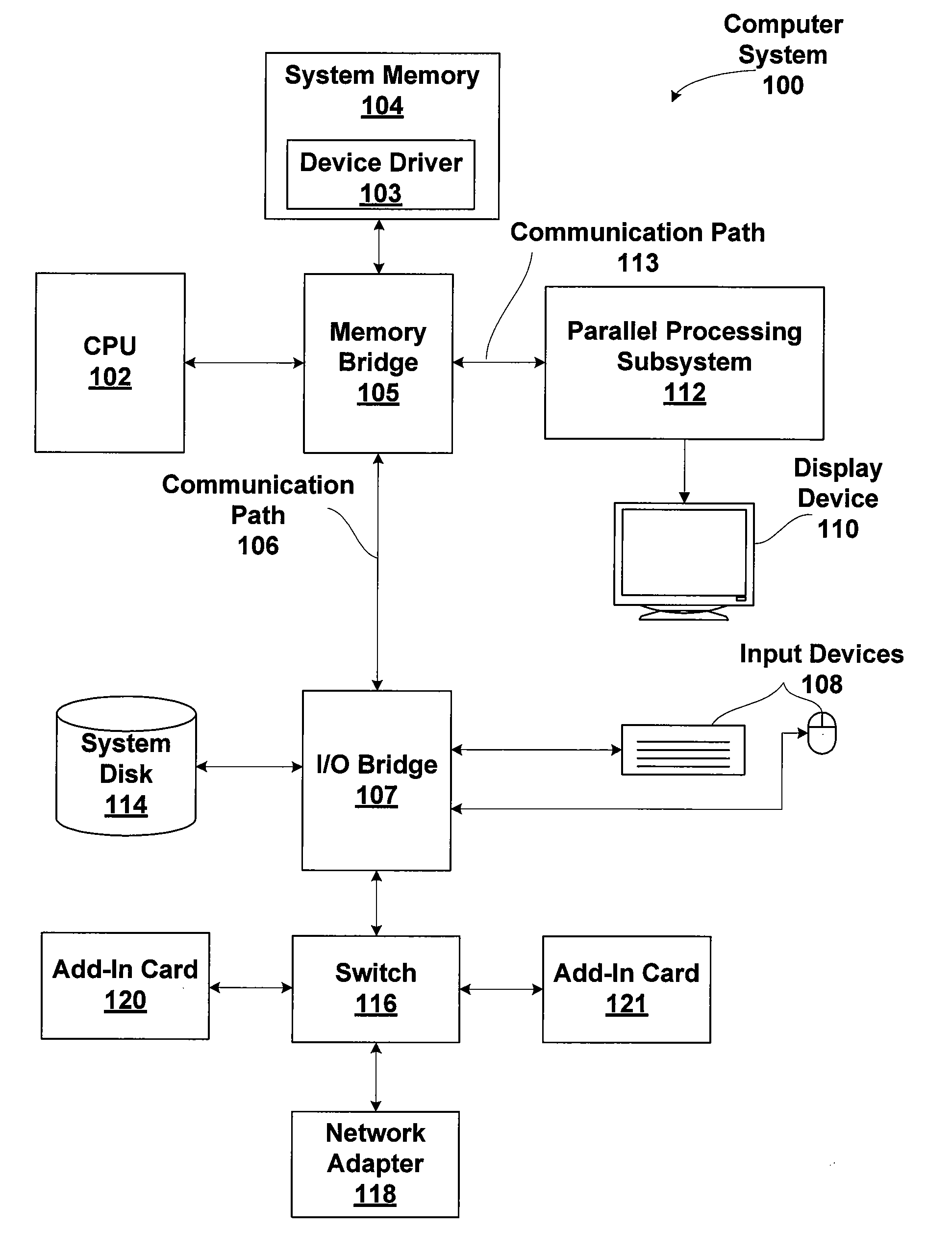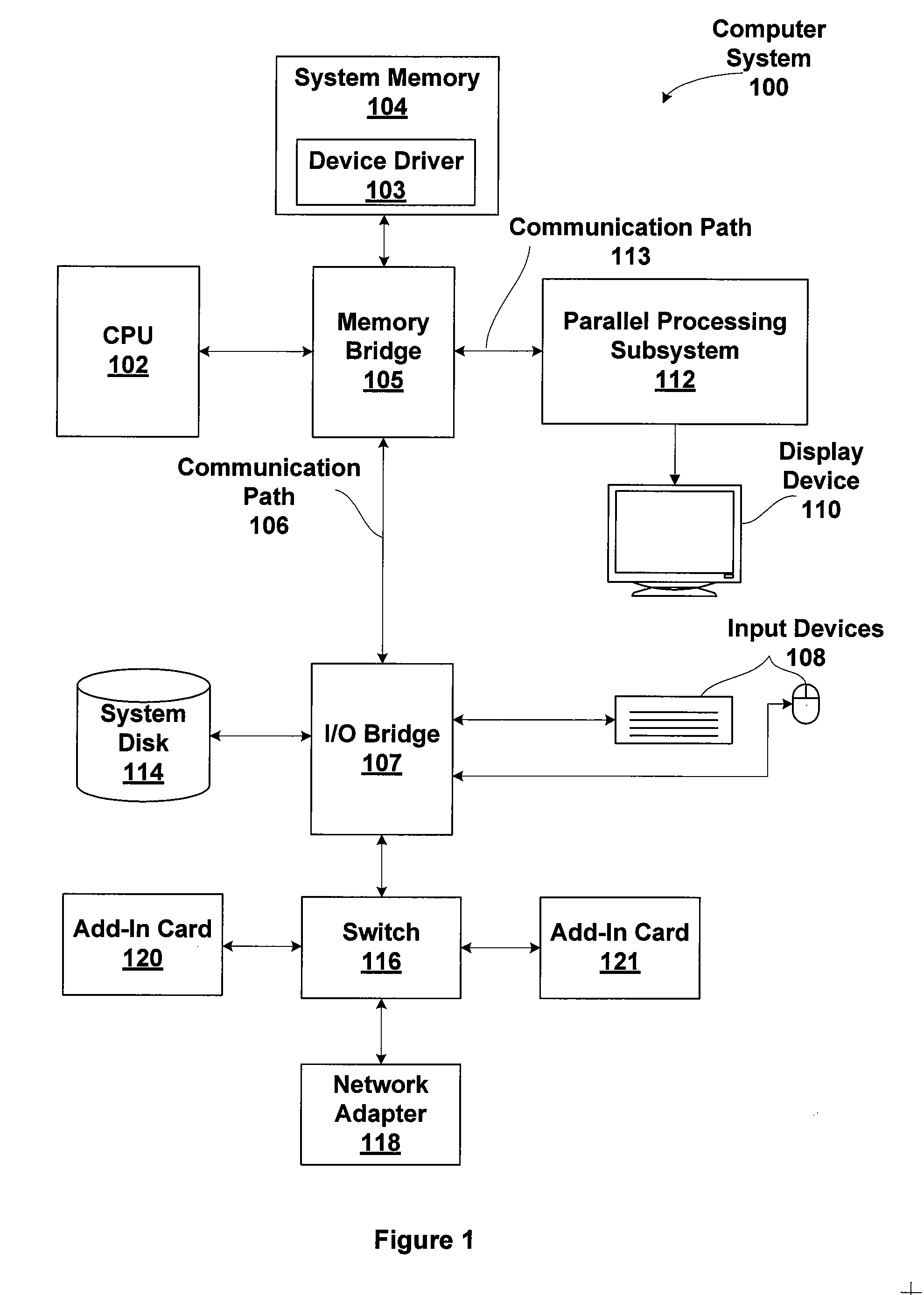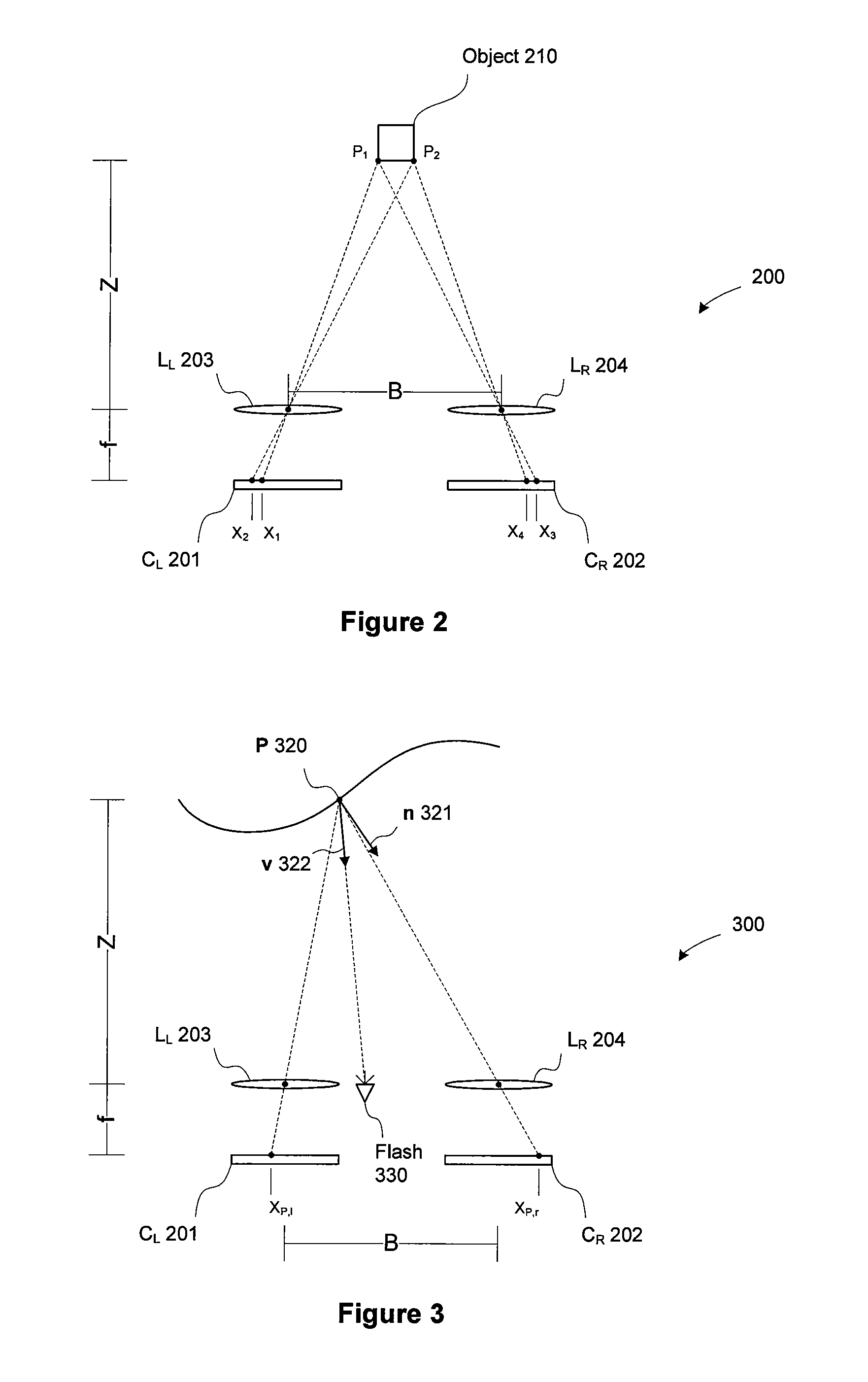Techniques for generating robust stereo images
a stereo image and stereo technology, applied in the field of stereo images, can solve the problems of conventional algorithms failing, pixel-matching algorithms failing, and algorithms having difficulty in making accurate matches on surfaces with uniform color, and achieve the effect of matching pixels corresponding
- Summary
- Abstract
- Description
- Claims
- Application Information
AI Technical Summary
Benefits of technology
Problems solved by technology
Method used
Image
Examples
Embodiment Construction
[0020]In the following description, numerous specific details are set forth to provide a more thorough understanding of the present invention. However, it will be apparent to one of skill in the art that the present invention may be practiced without one or more of these specific details.
System Overview
[0021]FIG. 1 is a block diagram illustrating a computer system 100 configured to implement one or more aspects of the present invention. The computer system 100 may be a desktop computer, laptop computer, handheld device, cellular phone, PDA (personal digital assistant), tablet computer, camera, or other well-known types of consumer electronic devices.
[0022]As shown in FIG. 1, computer system 100 includes, without limitation, a central processing unit (CPU) 102 and a system memory 104 communicating via an interconnection path that may include a memory bridge 105. Memory bridge 105, which may be, e.g., a Northbridge chip, is connected via a bus or other communication path 106 (e.g., a ...
PUM
 Login to View More
Login to View More Abstract
Description
Claims
Application Information
 Login to View More
Login to View More - R&D
- Intellectual Property
- Life Sciences
- Materials
- Tech Scout
- Unparalleled Data Quality
- Higher Quality Content
- 60% Fewer Hallucinations
Browse by: Latest US Patents, China's latest patents, Technical Efficacy Thesaurus, Application Domain, Technology Topic, Popular Technical Reports.
© 2025 PatSnap. All rights reserved.Legal|Privacy policy|Modern Slavery Act Transparency Statement|Sitemap|About US| Contact US: help@patsnap.com



